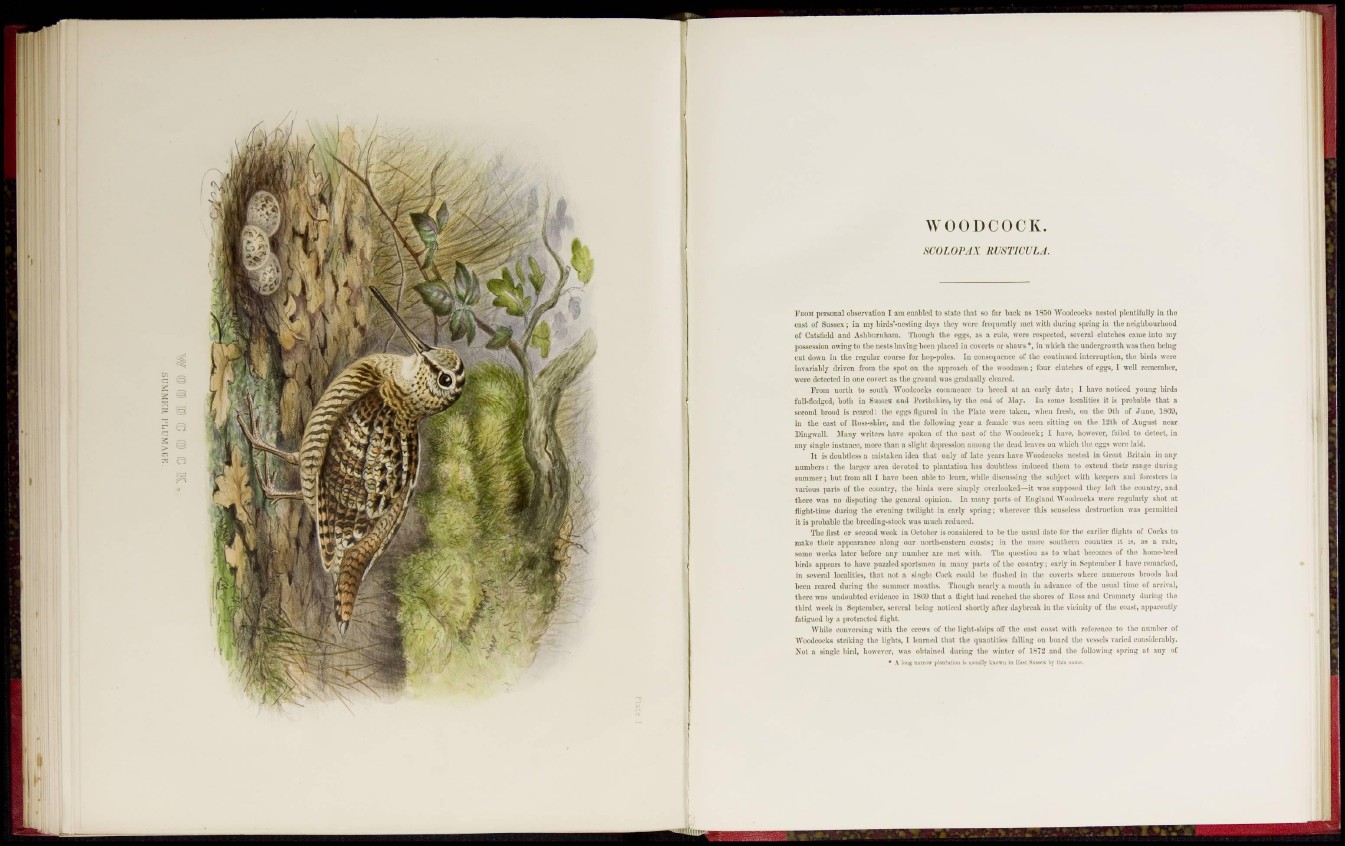
WOODCOCK.
SCOLOPJX RUSTICVLA.
I'HOM personal observation I am enabled to state that so far hack as 1830 Woodcocks nested plentifully in the
east of Sussex ; iu my birds'-nosting days they "ere frequently met with during spring in the neighbourhood
of Calsiield and Ashburuhnm. Though the eggs, as a rule, were respected, several clutches came into my
possession owing to lite nests bat iug been placed in coverts or shaws *, in which the undergrowth w as then being
cut down in the regular course for hop-poles. In consequence of the continued interruption, the birds were
invariably driven from the spot on the approach of the woodmen; four clutches of eggs, I well remember,
were detected in one covert as the ground was gradually cleared.
Prom north to south Woodcocks commence to breed at an early date; I have noticed young birds
full-Hedged, both iu Sussex and Perthshire, by the end of May. In some localities it is probable that a
second brood is reared: I hi* eggs figured in the Plate were taken, when fresh, on Hie Otli or June. lHi'J,
in the east of Kuss-shirc, and the following year a female was seen sitting on the 13th of August near
Dingwall. Many writers have spoken of the ocst of the Woodcock; I have, however, failed to detect, in
any single instance, more than a slight depression among the de.id leaves on which the eggs were laid.
It is doubtless a mistaken idea that only of Lite years have Woodcocks nested in Great Britain in any
numbers: the larger area devoted to plantation has doubtless induced them to extend their range during
summer; but from all 1 have been able to learn, while discussing the subject with koapSM and foresters in
various parts of the country, the birds were simply overlooked—it was supposed they left the country, and
there was no disputing the general opinion. In many parts of England Woodcocks were regularly shot at
night-time during the evening twilight in early spring; wherever this senseless destruction was permitted
it is probable the breeding-stock was much reduced.
The lirst or second week in October is considered to be the usual date for the earlier flights of Cocks to
make their appearance along our north-eastern coasts; in the more southern counties it is, as a rule,
some weeks later before any number are met with. The question as to what becomes of the home-bred
birds appears to have puzzled sportsmen in many parts of the country; early in September 1 have remarked,
in several localities, that not a single Cock could be Hushed in the coverts where numerous broods had
been reared during the summer months. Though nearly a month in advance of the usual time of arrival,
there was undoubted evidence iu lSli!) that a (light had reached the shores of Boea and Cromarty during the
third week in September, several being noticed shortly after daybreak in the vicinity of the coast, appjivutly
fatigued by a protracted flight.
While conversing with the crews of the light-ships off the east coast with reference to the number of
Woodcocks striking the lights, 1 learned that the quantities falling on board the vessels varied considerably.
Not a single bird, however, was obtained during the winter of 1879 and the following spring at any of